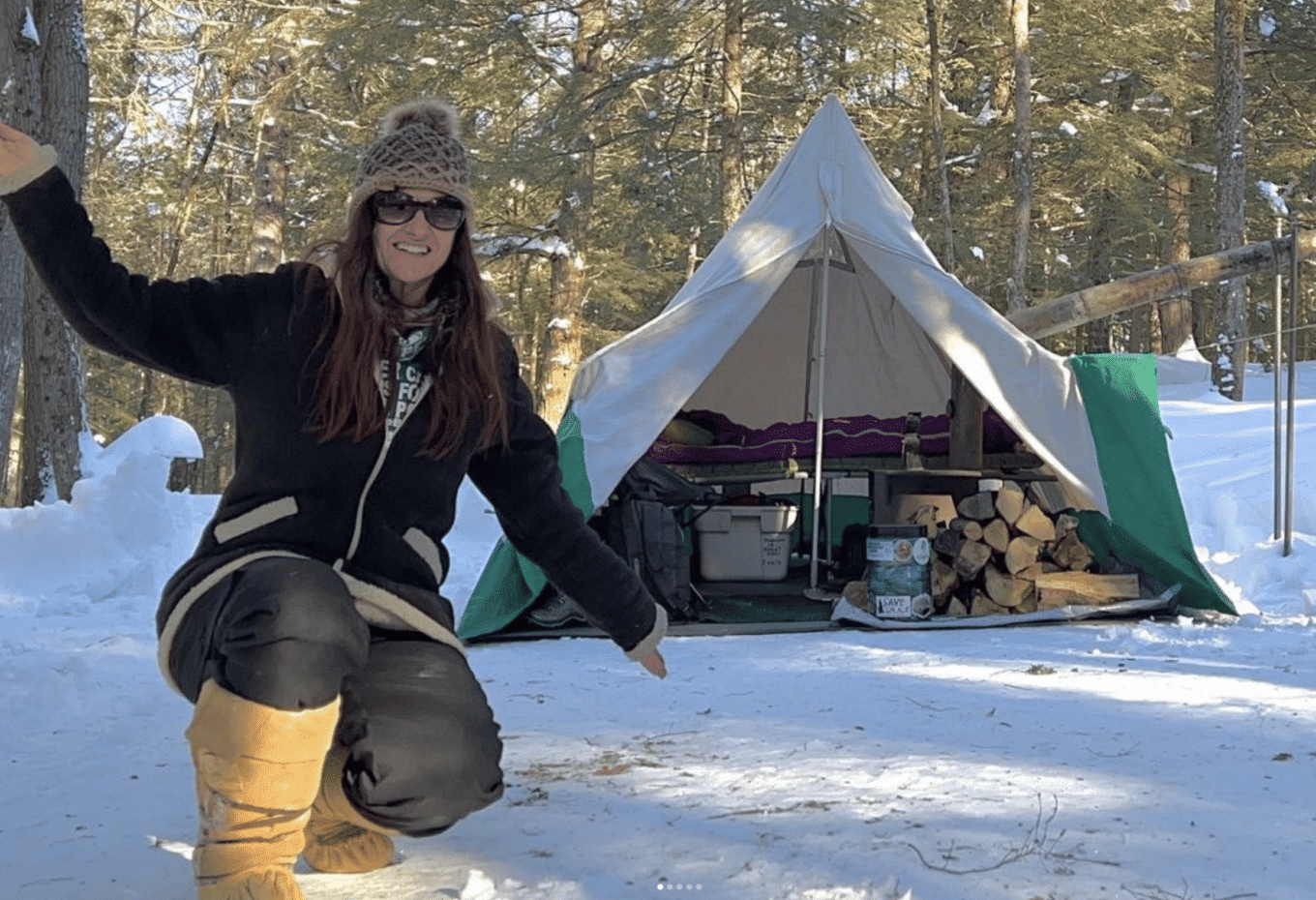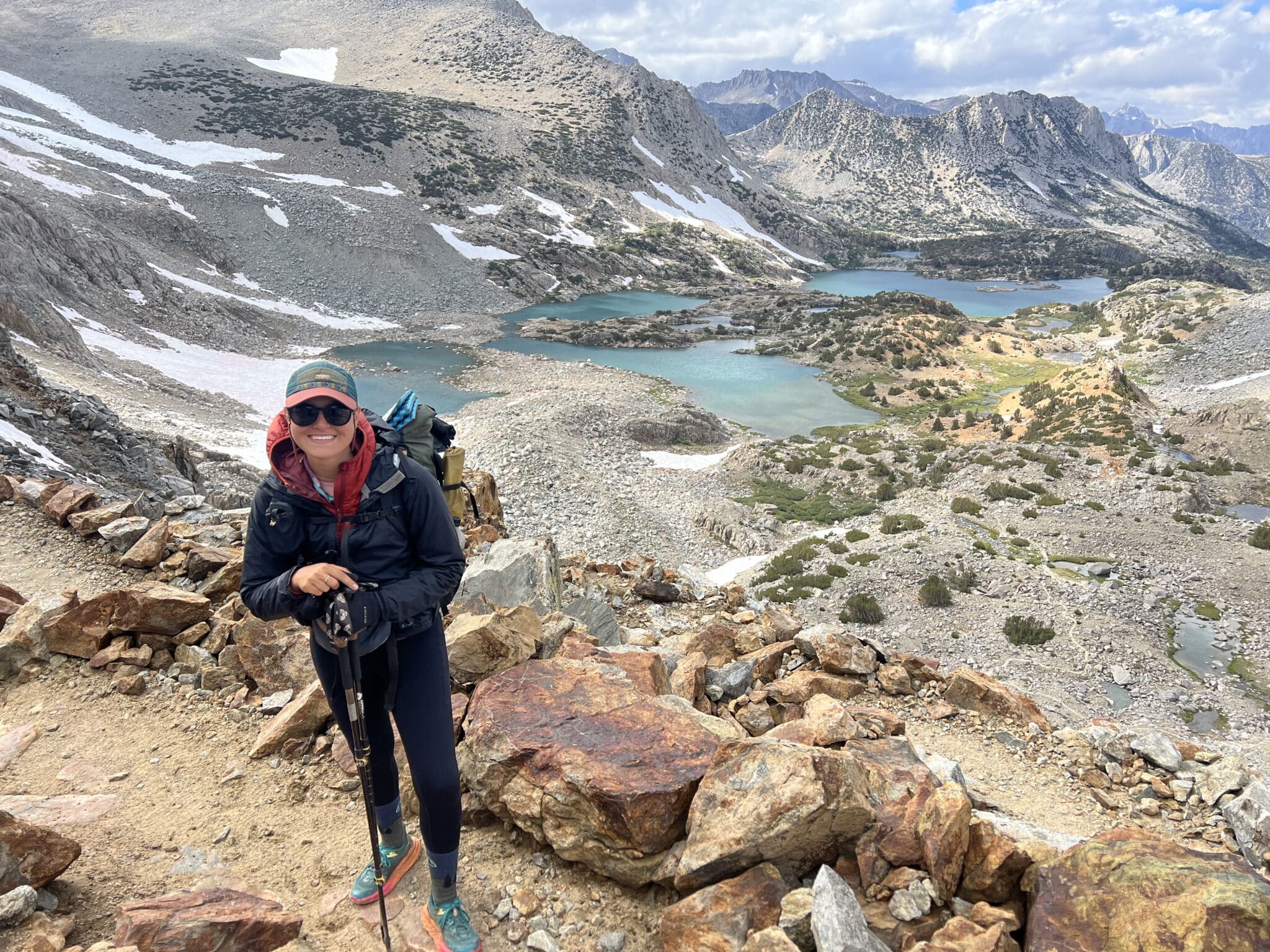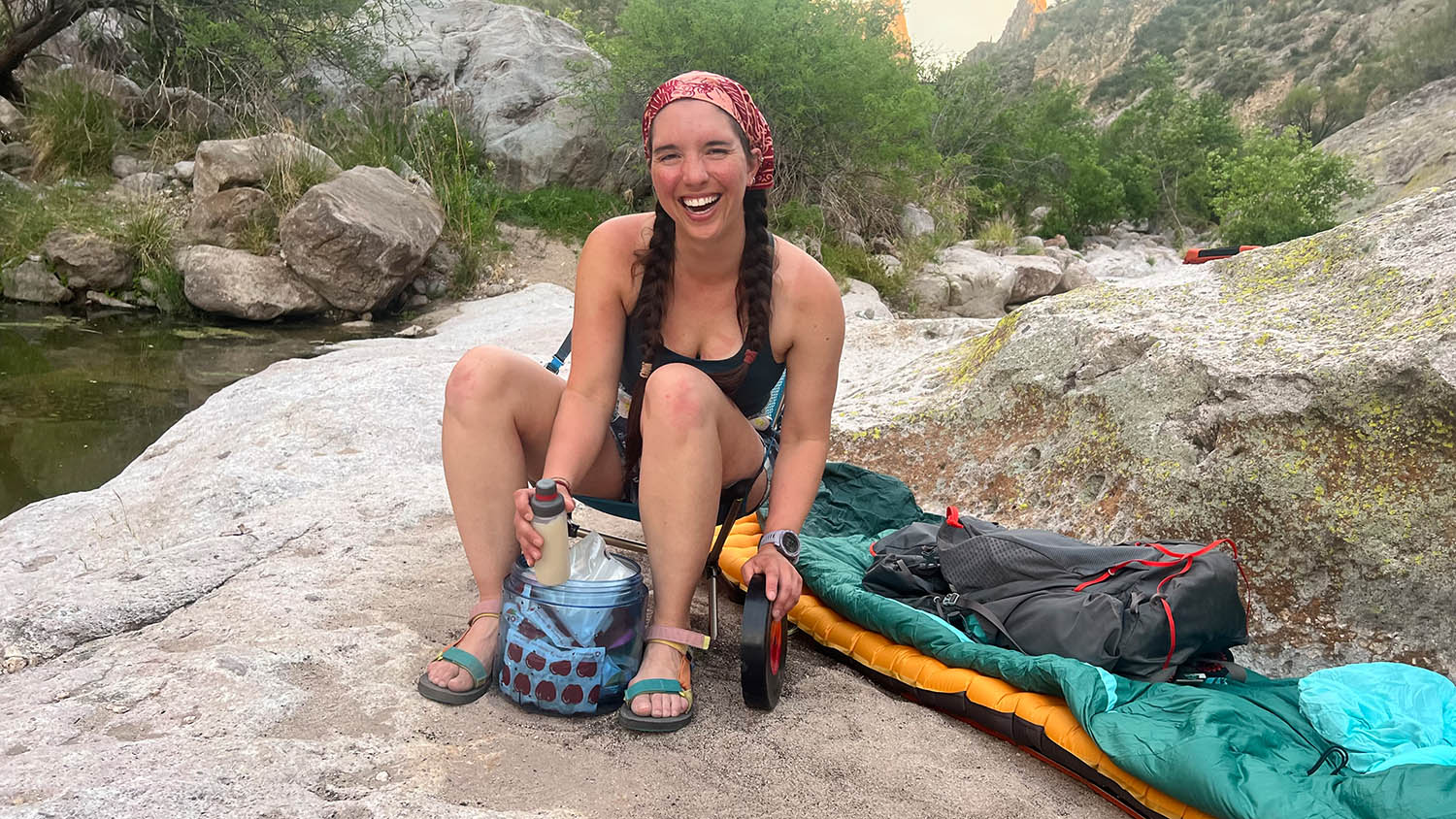Gear Guide #2 – Backpacking Sleeping Bags: What You Need to Know
One of your most essential pieces of backpacking gear is the sleeping bag. It’s responsible for keeping you warm and offers cozy comfort at the end of a long day on the trail. Get the wrong one, and you’ll be too cold or restricted to rest well.
You may wish it was as simple as searching for “Best backpacking sleeping bag” and clicking the first link. But, just like with tents, your bag choice depends on details specific to YOU.
Let’s take a look at how sleeping bags are rated. Then, we’ll dive into some factors that will help you choose the right bag.
How are sleeping bags rated?
You’ll see two numbers in the product descriptions when shopping for your best backpacking sleeping bag. The “Comfort” and “Lower Limit” ratings offer two perspectives on the same bag.
I’m a pretty chilly sleeper… just ask my husband. He’s not a huge fan of being used as a space heater on cold nights. Using the “Lower Limit” rating isn’t going to end well for me, so I always refer to the “Comfort” rating. If you’re on the opposite end of that spectrum and tend to sleep hot, going off the “Lower Limit” rating can get you by with a lighter bag.
It’s important to note that sleeping bag testing is standardized, and there’s a formula that brands must follow. Bags are tested in labs under controlled environments. Dummies wear base layers, and sleeping pads are beneath the bags, slowing the heat transfer to the ground. All of those factors will play into how much bag you need.

Is sleeping with clothes off or on in a sleeping bag warmer?
Having a breathable baselayer to sleep in is how you can transfer body heat to the air around you in a bag. Sleeping without clothes can have the same effect but may also get you chilled when coming in contact with the cold shell. If you don’t have breathable fabric, you’ll trap your body heat inside your clothing instead of heating your bag.
How can I warm up my sleeping bag?
If your bag is rated for the weather you’re experiencing, but you’re still chilled, it’s time to problem solve. Several things could be making the warm-up process slower, so let’s talk about some tricks of the trade.
1. It’s colder than you think.
Sometimes, the weather forecast changes, and you’re caught in colder-than-expected temperatures. To give yourself a personal space heater, boil water and pour it into a non-insulated bottle. Wrap it in a sock and slip inside your bag to actively heat the air. Be sure you’re ready to bed down for the night so you don’t let warm air escape.
2. Your bag is too big.
If you’re a short gal like me in a bag built for an NBA player, you’ll probably never get it warmed up. Creating body heat takes energy, and that’s just too much space. You can shrink your bag by tying off the bottom or stuffing extra clothing into the foot box. Just don’t store anything that smells interesting to a bear in there!
3. You don’t have a sleeping pad.
Sleeping with your bag directly on the floor of your tent can result in heat transfer, leaving you colder than expected. Remember, bags are tested and rated with a pad! Using natural insulation like dry leaves can help if you don’t have one

What materials are best for a backpacking sleeping bag?
Two types of insulation are primarily used in modern sleeping bags: down and synthetic filling.
Down is a natural material known for its superior warmth-to-weight ratio. It’s the fluffy, tiny feathers that lay against a goose’s skin, insulating it beneath their waterproof feathers. Nothing beats down when it comes to lightweight insulation! Its drawback is its cost.
Comparatively, synthetic filling is made of polyester fibers and has a heavier warmth-to-weight ratio. It takes more synthetic filler in weight to achieve the same temperature rating. That heavier bag won’t pack as small, either.
That being said, the trade-off is sometimes worth it when finances are tight. If you have the option, you’ll probably appreciate the down. But if not, synthetic can get it done for you.
What are the different styles of sleeping bags?
There are different styles of sleeping bags to suit different situations and sleeping preferences. Choosing the right one will make a world of difference in your overnight comfort!
Mummy Bag – These bags taper in towards the bottom, creating a mummy-shaped outline. It’s easier to keep a mummy bag warm because of the smaller interior, which makes it a common choice for cooler camping. Some sleepers will find the restriction uncomfortable, however. *raises hand emphatically* They also feature a hood, usually with a drawstring to draw it in around your face.
Rectangle Bag – Before the rise of the Mummy, all bags were basic rectangles. Just swap the pros and cons, and you’ll get an accurate picture. Feel free to sprawl in this bag, but be prepared for it to take longer to warm up. The extra fabric doesn’t pack down as small, either.
Barrel Bag – This is the happy medium for people wanting an in-between option. The taper isn’t as drastic as on a Mummy bag, but it still hugs your body more than a rectangle bag. They usually feature a hood as well, though they may or may not have a drawstring to pull it snug around your face.
Double Bag – If you’re backpacking with a pal and want to share body heat, a double bag would do the trick. These bags are twice as wide as your typical single sleeping bag. Some feature hoods, some come as a complete sleep system with a double-wide pad… there are options! Some single bags can also be zipped together, so you may want to explore that possibility before making a purchase.
Elephant’s Foot – Try an elephant’s foot for a bag that packs small. Its shortened shape means you’ll probably need to add a layer to your top half, but since you’ll already be carrying that, you ultimately save weight.

What is the warmest sleeping bag?
There’s a bag that claims to be suitable for -40*C/F, but it won’t fit in your backpack! It’ll also set you back 1500 bucks. Do with that what you will…
It’s much more common to find bags rated for 0*F, with a few dipping below that by about 15 degrees. As you select your bag, remember that the “comfort rating” is more realistic than the “lower limit rating.”
What other features are important in a sleeping bag?
Different bells and whistles can make your life easier or end up being largely ignored. Take some time to get to know these features that you may want to prioritize in your shopping.
Ventilation – Some bags have small zipper ‘windows’ to adjust to various temperature fluctuations. Common locations are in the foot box and the mid-section.
Stash Pockets – Small compartments to store electronics while you sleep.
Pillow Pocket – Empty pouch on the interior to stuff with clothing to create a pillow or to hold your camp pillow in place.
Pad Loops – Small straps along the edge of the bag to connect to your sleeping pad.
Draft Tube – Thick tube of insulation that covers the zipper to prevent warm air from leaving and cold air from entering.

What’s the best brand of backpacking sleeping bag?
The best brand is one that fits your budget and keeps you comfortable! As you narrow it down, look into guarantees and customer service options. Some brands use their repair program to further their sustainability values.
How much do backpacking sleeping bags weigh?
The lightest sleeping bag I could find weighs a mere 12.4 oz and is rated for a lower limit of 40 degrees F.
How much do backpacking sleeping bags weigh?
The first time I went backpacking, I didn’t even have a sleeping bag. Low on funds and high on excitement, I stuffed an old quilt and a fuzzy blanket into my pack and hit the trail. It wasn’t ideal, but it did the trick.
Ultimately, backpacking aims to reconnect with yourself, nature, and the ones you love. The perfect bag will undoubtedly make you more comfortable while you’re out there, but the one you have will probably work.
Author Profile

Jessica Cockroft
Jess merges her passion for words and an insatiable longing for adventure as an outdoor freelance content writer and marketer. When she’s not busy stringing words together you’ll probably find her planning another camping trip for her crew of kids or taking care of the homestead. You can find her on LinkedIn and Instagram, as well as on her own website.




